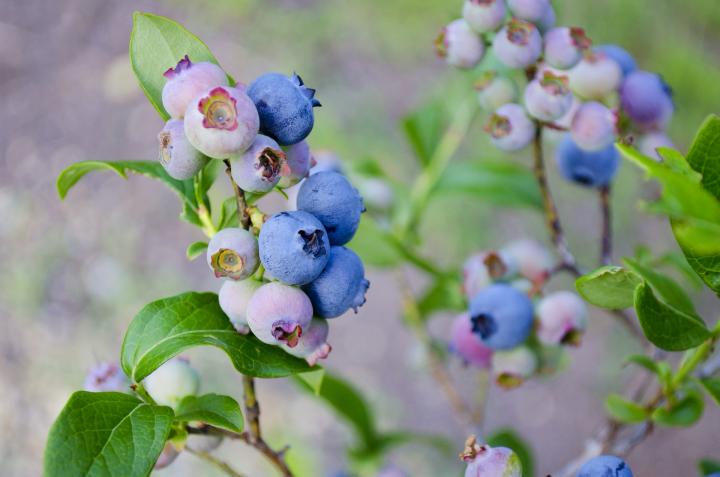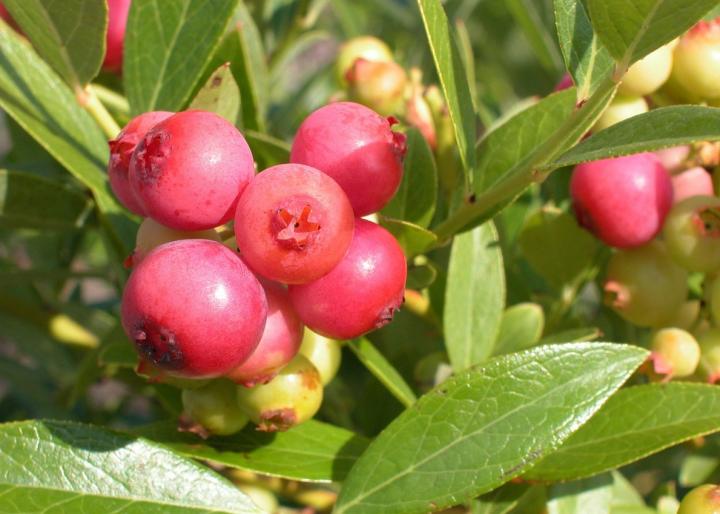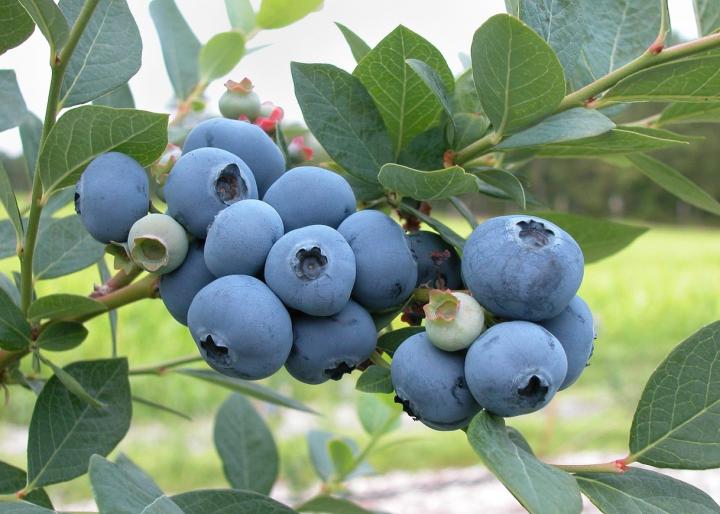better homes & gardens moore deluxe rocking recliner multiple colors
Growing Blueberries
Planting, Growing, Pruning, and Harvesting Blueberries
Planting, Growing, Pruning, and Harvesting Blueberries

Blueberries are one of the easiest fruits to grow.
Pixabay
Share:
Plump, juicy blueberries aren't just delicious. They're high in nutrients, antioxidants, fiber, and vitamins. Fortunately, for very little effort, blueberries are easy to grow—if you have the right soil conditions. See our Blueberry Growing Guide to learn how to how to plant, care for, prune, and harvest your blueberry bushes.
Did you know that the modern blueberry is a 20th-century invention? Before the 1900s, the only way to enjoy these North American natives was to find them in the wild. Then, scientists started to unlock the secrets of cultivating blueberries—and we're glad they did!
- A relative of rhododendron and azalea, blueberry bushes aren't just a great fruiting plant but also an attractive addition to your overall landscape, offering scarlet fall foliage and creamy-white, bell-shaped spring flowers.
- Plus, blueberries are one of nature's superfoods, crammed with essential nutrients, minerals and health-boosting polyphenols.
Read more about why you should grow blueberries in your home garden (as if you needed an excuse).
Types of Blueberries
There are four types of blueberries: highbush, lowbush,hybrid half-high, and rabbiteye.
The most commonly planted blueberry is the highbush. Most blueberry breeding has focused on this species, so there are many varieties that range widely in cold hardiness and fruit season, size, and flavor. (Read more about blueberry varieties below.)

Planting
When to Plant Blueberry Bushes
- Blueberries can be planted in spring or also in late fall in all but coldest regions. In Zones 5 and below, it's best to wait until early to mid-spring to plant.
- If available, 1- to 3-year-old plants are a good choice. These can be bought in containers or bare-root. In either case, be sure to buy from a reputable nursery or website.
Choosing and Preparing a Planting Site
- Select a sunny, sheltered spot. While blueberries are tolerant of shade, better crops are obtained in the sun. At the same time, they should not be exposed to harsh, drying winds.
- Don't plant blueberries too close to trees, as the trees will not only block out sunlight, but will also suck up any moisture in the soil.
- If planting multiple bushes, it's best to plant them in a patch, rather than scattered throughout your garden. This will bolster berry production and quality.
- The blueberry is a shallow-rooted plant. Therefore, it requires a soil that holds moisture, but also drains well and doesn't stay wet. Don't plant blueberries in sites that have heavy, clayey soils that stay wet.
- Blueberries thrive in soil that is acidic. The soil pH should ideally be between 4.0 and 5.0; soil that isn't acidic enough will stunt growth. Soil can be acidified by mixing a small amount of granulated sulfur into the soil several months before planting. Peat moss, as well as pine bark or needles, are also good additions that will help acidify your soil.
- Mix organic matter into the soil before you set your blueberry bushes. (See more about soil amendments and preparing soil for planting.)

How to Plant Blueberry Bushes
- Tip: Be careful not to plant them too deeply. The rootball should be just below the surface (one-quarter to one-half inch).
- Dig holes about 20 inches deep and 18 inches wide (or about twice as wide and twice as deep as the roots of the plant).
- Space bushes 4–5 feet apart in a row, with at least 8 feet between rows. Prepare a planting mixture of 2 parts loam and one part oak leaf mold, peat moss, aged sawdust, or compost, and place a layer of this mixture in the bottom of the hole.
- Set the bush in the hole with the rootball just below the surface and its roots spread out. Pack the hole tightly with soil.
- Apply fertilizer one month after planting, not at the time of planting. Apply ½ ounce of a 10-10-10 fertilizer in a band around the plant 6 to 12 inches from the crown.
Can You Grow Blueberries in a Container?
Yes! In fact, blueberries grown in containers are easier to protect from birds and other critters, more disease resistant, easy to harvest, and easy to move if needed. Plus, if you live in an area without acidic soil, growing blueberries in containers allows you to tailor the soil pH specifically for them.
Here's how to do it:
- Use a large container with drainage holes.
- Use a potting mix designed for acid-loving plants such as azaleas or rhododendrons, or mix sandy soil with peat moss and compost.
- Plant the bush in the container and water well.
- Add mulch on top of the soil to keep in moisture.
- Place the pot in a sunny spot.
- Keep soil moist.
- In northern regions, overwinter the blueberry container in a protected area or cover the container with straw or wrap it in burlap.
Varieties for Containers
- 'Top Hat': Bred by the University of Michigan for small spaces and containers.
- 'Pink Lemonade': Pink blueberries contain genetics from rabbiteye blueberries (a standard in the hot South). These pink berries can be planted in nearly every climate.
- 'Pink Champagne': Another pink variety full of antioxidants and sweeter than blue blueberries.

Care
How to Care for Blueberry Bushes
- Mulch to keep shallow blueberry root systems moist, which is essential. Apply a 2- to 4-inch layer of woodchips, saw dust, or pine needles around the bush after planting, but leave a gap around the trunk of the bush to allow for proper air flow. Read more about mulching.
- Blueberries need 1 to 2 inches of water per week.
- Warning: Blueberries are a favorite snack of hungry birds, so it's recommended that you protect blueberry bushes ahead of time by draping bird netting over your plants.
- One year after planting, apply 1 ounce of 10-10-10 fertilizer per bush in the spring at blooming time, and increase the rate by 1 ounce each year thereafter to a maximum of 8 ounces for mature bushes.
- Do not allow the bush to produce fruit for the first year or two after planting. This lets the plant use its energy to get well established in its new home instead.
- Pinch back any blossoms developing on newly set plants to allow the energy to go to growth.
How to Prune Blueberry Bushes
- For the first 4 years or so after planting, there is no need to prune blueberry bushes. From then on, pruning is needed to stimulate growth of the new shoots that will bear fruit the following season.
- Prune plants in late winter or early spring before new growth begins.
- Cut out dead, broken, short, weak, and spindly shoots.
- On highbush varieties, begin with large cuts, removing wood that is more than 6 years old, drooping to the ground, or crowding the center of the bush. Also remove low-growing branches whose fruit will touch the ground, as well as spindly twigs.
- Prune lowbush blueberries by cutting all stems to ground level. Pruned plants will not bear the season following pruning, so prune a different half of a blueberry patch every two years (or a different third of a patch every three years).
Video: How to Grow and Prune Blueberry Bushes
Pests/Diseases
- Birds
- Blueberry Maggot
- Powdery Mildew
Harvest/Storage
How to Harvest Blueberries
- Blueberries are typically ready for picking between June and August.
- Don't rush to pick the berries as soon as they turn blue. Wait a couple days. When they are ready, they should fall off right into your hand.
- If you plant 2-year-old blueberry bushes, they should start to bear within a year or two. (Pick off any flowers that form the first year or two after planting, to allow the bush to become established.) Be aware that full production is only reached after about 6 years (depending on variety).
How to Store Blueberries
- Blueberries are one of the easiest fruits to freeze. Learn how to properly freeze blueberries so you can have them all winter long.

Recommended Varieties
Blueberries are partially self-fertile, so you will harvest more and larger berries by planting two or more varieties together. Planting more than one variety can also extend the harvest season.
Highbush (Vaccinium corymbosum): A six-foot shrub hardy from Zone 4 to Zone 7.
- For withstanding cold winters, choose 'Bluecrop', 'Blueray', 'Herbert', 'Jersey', or 'Meader'.
- For big berries, choose 'Berkeley', 'Bluecrop', 'Blueray', 'Coville', 'Darrow', or 'Herbert'.
- For flavor, usually the main reason for growing your own fruit, choose 'Blueray', 'Darrow', 'Herbert', 'Ivanhoe', 'Pioneer', 'Stanley', or 'Wareham'.
- For something different, try 'Pink Lemonade', which produces bright pink blueberries!
Lowbush (Vaccinium angustifolium): For the coldest climates, lowbush varieties are your best bet, hardy from Zone 3 to Zone 7.
- These are the blueberries you find in cans on supermarket shelves. When fresh, the fruits are sweet and covered with a waxy bloom so thick that the berries appear sky blue or gray.
- The creeping plants, a foot or so high, are spread by underground stems, or rhizomes. They blanket the rocky upland soils of the Northeast and adjacent portions of Canada. Lowbush blueberries make a nice ornamental fruiting ground cover.
- Plants sold by nurseries are usually seedlings or unnamed wild plants, rather than named varieties.
Half-High: Breeders have combined qualities of highbush and lowbush blueberries into hybrids known as half-high blueberries.
- University of Minnesota introductions include 'Northcountry', a variety that grows 18 to 24 inches high and has excellent, mild-flavored, slightly aromatic sky-blue fruits; and 'Northblue', which grows 20 to 30 inches high and produces an abundance of dark-blue, nickel-size, somewhat tart fruits-just right for pies.
- 'Northland' is a half-high that grows 3 to 4 feet tall. From Michigan, it has relatively bland, average-quality fruit.
Blueberries for Southern Gardens (Zones 7–9):
- Rabbiteye (Vaccinium virgatum ): Grown in the southeastern United States, rabbiteye varieties are extremely adaptable, productive, and pest-tolerant. They do, however, have a high degree of self-incompatibility and require two or more varieties be planted together to ensure pollination. Recommended varieties include 'Powderblue', 'Woodard', 'Brightwell'.
- Southern Highbush (hybrids of V. virgatum, V. corymbosum, orV. darrowii): Southern highbush varieties tend to be pickier and harder to grow than rabbiteyes, but there are a few high-quality varieties that do well. Among these are 'Emerald', 'Windsor', and 'Springhigh'.
- Read more about blueberries for southern gardens from the University of Florida: Blueberry Gardener's Guide
Wit & Wisdom
- In Ireland, baskets of blueberries are still offered to a sweetheart in commemoration of the original fertility festival of Lammas Day, celebrated on August 1.
- Blueberries are one of the few naturally blue foods on earth.
- For centuries, Native Americans gathered "star berries" (the blossom end of each berry forms the shape of a perfect five-pointed star) from forests and fields and ate them fresh or dried them for later use.
- Dried blueberries were added to stews, soups and meats.
- Dried berries were also crushed into a powder and rubbed into meat for flavor.
- Blueberry juice was used to cure coughs.
- Blueberry juice was also used as a purple dye for cloth and baskets.
- A tea made from the leaves of the blueberry plant was believed to be good for the blood.
- Tired of blueberries? Try growing another berry in your garden, such as strawberries, raspberries, or blackberries!
Recipes
Cooking Notes
Visit our recipe archives to find delicious blueberry recipes ranging from salads to desserts!
Vegetable Gardener's Handbook

What do you want to read next?
Growing Blueberries
better homes & gardens moore deluxe rocking recliner multiple colors
Source: https://www.almanac.com/plant/blueberries
Posted by: ellingtonditer1959.blogspot.com

0 Response to "better homes & gardens moore deluxe rocking recliner multiple colors"
Post a Comment